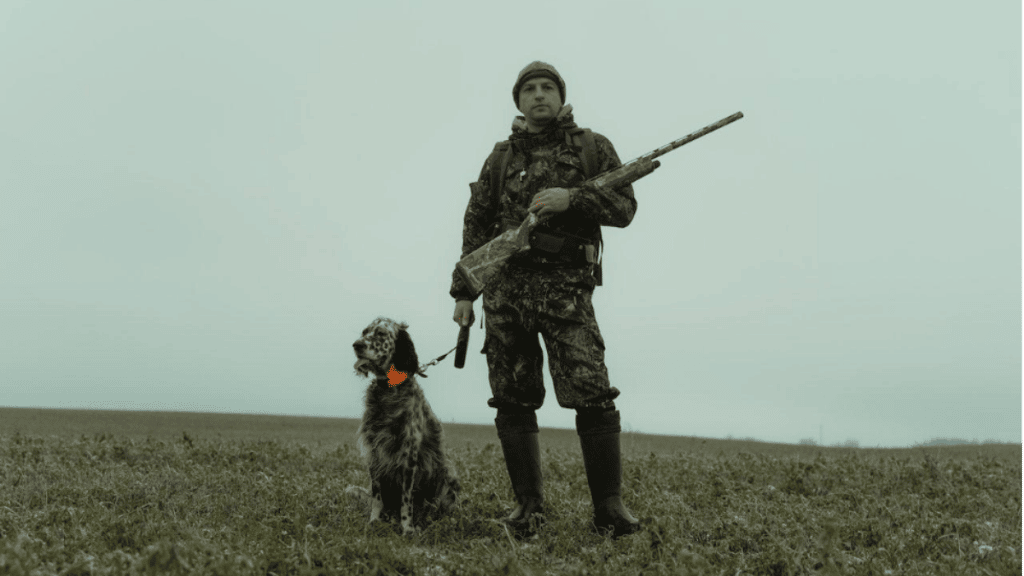The US Army K-9 Corps has come a long way since it was established on March 13, 1942. It marks the official start of active recruitment and training of canine military forces. Today, this date is celebrated as National K9 Veterans Day in honor of the courageous service and selfless sacrifice of military dogs in the US Armed Forces.
However, 1942 was not the first time dogs worked alongside troops. In fact, the history of military dogs is extensive.
Among the many four-legged heroes of the US military include the brindle pitbull named Sallie Ann Jarrett, who inspired her comrades at the 11th Pennsylvania Infantry during the Civil War, Sergeant Stubby of the 102nd Infantry, who served in 17 battles throughout World War 1. Stubby’s claim to fame was catching a German spy!
So, what do these courageous canine forces do today? Let’s learn some interesting facts about military dogs, the irreplaceable work they do, and why they deserve more appreciation.
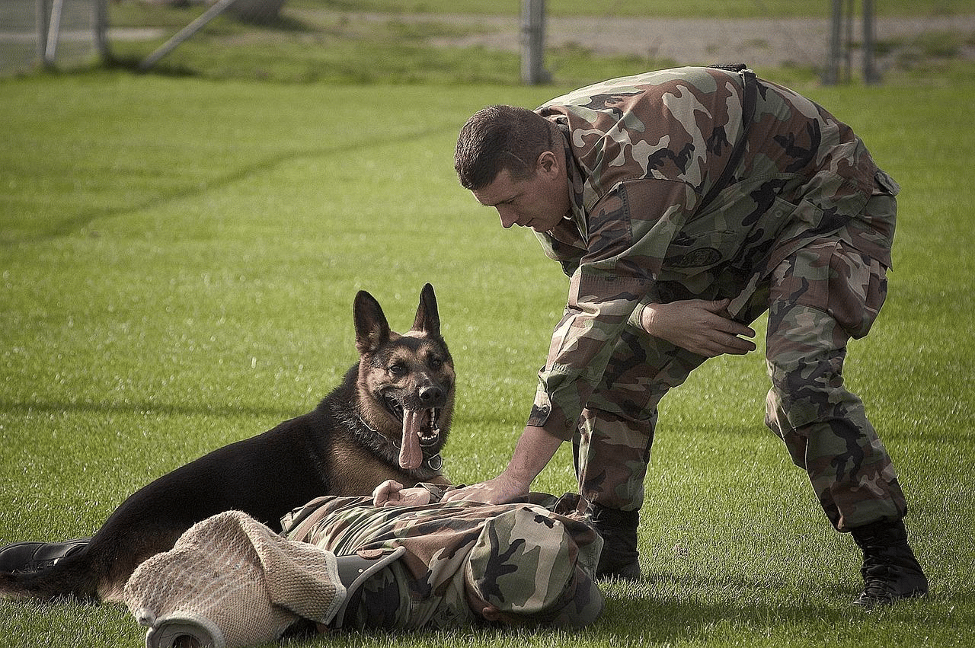
First Things First: What Does A Military Dog Do?
Every military dog goes through rigorous training before they’re sent to the field. Handlers must ensure that they have the necessary skills for the various duties that military dogs are tasked with.
And what do military dogs do exactly? Here’s an overview:
- Search and rescue
- Scout and patrol
- Guard and sentry
- Narcotics and weapons detection
Military working dogs are also exposed to a wide range of sights, sounds, and smells that they might encounter on the field. It helps them think quickly on their paws and respond to different situations accordingly.
Regardless of which military branch they serve under, all canine troops must first go through the 120-day Military Working Dog Training Program conducted by the 341st Training Squadron in San Antonio, TX. This program trains military working dogs for patrol and one other skill, such as detecting drugs or sniffing out explosives.
Once they graduate from the program, canine troops are expected to serve in one assigned service for the rest of their military career — much like their human comrades.
How Else Do Military Dogs Serve In The Armed Forces?
Military dogs are not always expected to serve at the front lines. They also support US troops and military service members in other ways.
Here’s a closer look at the different ways military working dogs help their human comrades:
- Service Dogs: Their specialized support ranges from opening doors and guiding their handler through pathways to detecting seizures and getting help for their handler. They are also protected by the Americans with Disabilities Act.
- Therapy Dogs: These dogs provide affection, comfort, and joy to handlers in nursing homes, retirement homes, hospices, and clinical settings. For example, a therapy dog can help people with hypertension experience lowered blood pressure. They also help put people at ease during psychological therapy.
- Mascots: They help boost the morale of human troops and even serve as a lucky charm for squads, platoons, companies, battalions, and regiments.
Military dogs, service dogs, therapy dogs, and mascots have their respective roles and responsibilities. They’re all equally important, even though military working dogs arguably have the most physically demanding and high-risk duties.
All military working dogs thus have access to state-of-the-art medical care at Holland Military Working Dog Hospital in Texas. The premier veterinary hospital even has a rehabilitation center where four-legged warriors are brought in for care and recovery.
What Is A Military Dog Called?
The Department of Defense affectionately refers to US military working dogs as Four-Legged Fighters.
Military working dogs also have their own version of highly-trained and skilled troops. They are called Multi-Purpose Canines, or Combat Assault Dogs, and they work with special operations forces and elite military units for critical military missions.
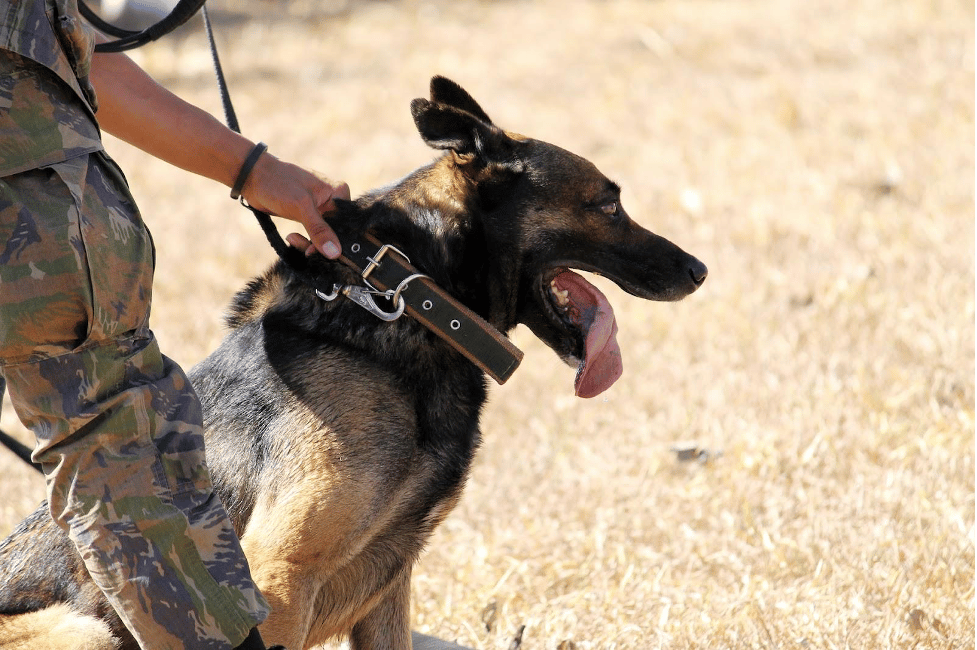
Do Military Dogs Get Rank?
Yes, they do. Interestingly, every military dog is a non-commissioned officer (NCO) who is always one rank higher than its handler to ensure that they’re treated humanely.
It is believed that this tradition intended to help prevent abuse, mistreatment, and neglect of canine troops by their handles. If the military working dog is the higher ranking officer of the two, any form of abuse against them will result in disciplinary action against the handler.
Apart from ensuring a strong, respectful bond between the dog and its handler, honorary NCO ranks also help maintain order during training and missions.
Now, do military dogs get paid? No, they don’t. However, their handlers are compensated for caring for them. But military working dogs can earn awards and receive rewards from animal welfare groups and nonprofit animal organizations.
The highest honor a US military dog can receive is the American Humane Lois Pope K-9 Medal of Courage.
What Dog Is Used Most In The Military?
The Army K-9 Corps initially considered more than 30 military dogs breeds. Their intention was to train healthy, intelligent, and highly capable canines, then determine which breeds could best work alongside the various branches of service.
Eventually, this list of military k9 dog breeds was narrowed down to seven:
- Alaskan Malamute
- Belgian Malinois
- Collies
- Doberman
- Eskimo dogs
- German Shepherd
- Siberian Husky
After completing basic obedience training, these military working dogs undergo specialized programs that will prepare them for their assigned fieldwork.
Military Dogs: Breeding and Recruitment
The US Department of Defense partners with military dog breeders from around the world. However, it’s worth noting that around 13% of all US military dogs are born and bred through the Military Working Dog Breeding Program, also called the Puppy Program. This program raises Belgian Malinois puppies for military service.
Why Belgian Malinois? It’s because this breed is known as one of the top police dogs because of their agility, drive, energy, loyalty, trainability, and work ethic. Belgian Malinois is also a highly valued military k9 dog breed because of its strong sense of smell.
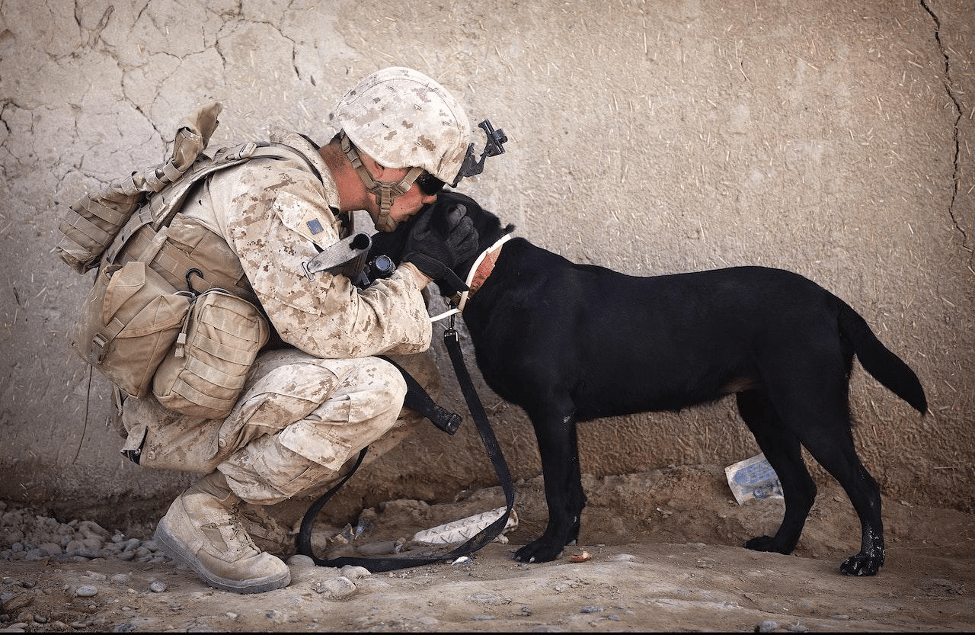
Military Dogs And Their Handlers
Most pet owners have concerns about their dog’s food or health, wondering, “Can dogs eat cabbage?” or “What can I do to make a puppy feel more comfortable in its new home?”
While these questions are important, priorities in the military are a little different. The most pressing concern is whether military working dogs and their handlers can get along — this ensures both their safety as well as the success of every task or mission they’re assigned to.
All military dogs initially enter a foster program where they are socialized and trained. But this preparation goes both ways — becoming a military dog handler also requires extensive training.
After joining the army and completing military police school, the person must complete a basic training program at the Texas Lackland Airforce Base. Here, they will learn essential skills to care for their dogs, along with obedience training, technical training, controlled aggression training, and more. Once they warm their certificate, they can become active handlers. Advanced courses and certifications are also encouraged to update the handlers’ canine knowledge.
It goes without saying that military working dogs and their handlers form an unbreakable bond that lasts long after their last mission together. In fact, nearly 90% of military dogs are eventually adopted by their handlers.
Interesting Facts About Military Dogs
Curious to know more about military dogs?
- 50 to 90 Belgian Malinois puppies are born into the Puppy Program every year.
- Military dogs may also experience PTSD, much like their human handlers.
- Military working dogs serve for an average of 8 years before their retirement.
- Robby’s Law (HR 5314) ensures that all military working dogs are eligible for adoption once they retire from their designated branch of service. Usually, their former handlers end up adopting their canine partners.
- In New Jersey, there’s a dedicated US War Dogs Memorial honoring canine fighters.
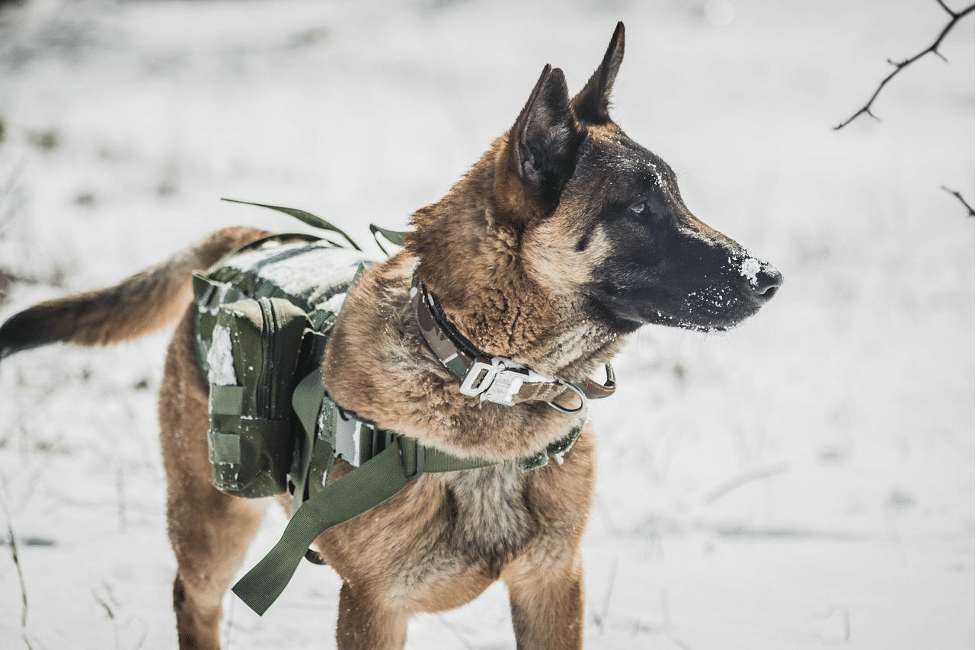
Got More Fun Facts About Police Dogs And Military Dogs?
Military and police dogs train hard to become the fearless four-legged soldiers they are. If you have any more military dog facts and stories that you would like to share, let us know in the comments below!
